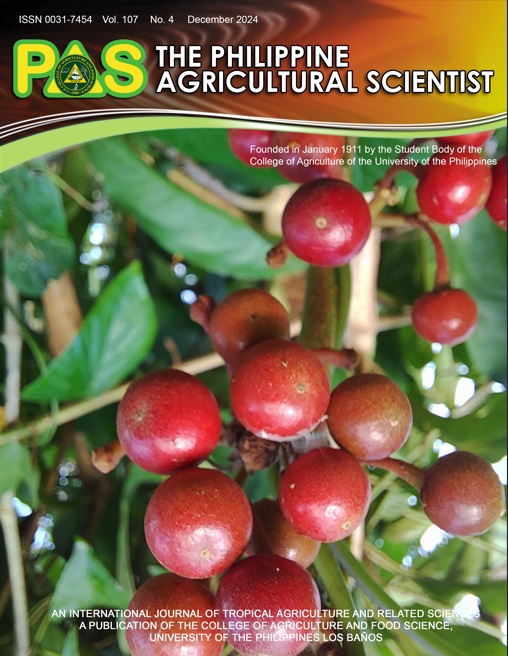Root Plasticity of Selected Corn (Zea mays L.) Varieties Grown for Food and Forage in Response to FertiGroe®-N and Urea
Abstract
Root plasticity, the capacity of a corn root system to modify its growth and development in response to varying environmental conditions, is a crucial adaptability trait for optimizing water and nutrient uptake, especially in a challenging environments. Understanding root plasticity provides insights into the pattern basis of crop adaptation, contributing to the development of improved corn varieties and agricultural practices that optimize the production of both ear shoots and forage. This study assessed root traits and other morphological-physiological responses of three corn varieties (NK8840, IPB Var 6, and Pearl Sweet) grown for food (ear shoots) and forage (baby corn fodder) to FertiGroe®-N and urea fertilizers. The experiment used a two-factor randomized block design with three replications, conducted from August 2021 to February 2022 in Tiaong, Quezon, Philippines using PVC tubes filled with 20 kg of soil. Results revealed that FertiGroe®-N significantly increased root weight, length, volume, and diameter compared to urea, particularly at two to three days after silking (R1) stage. This enhanced root growth translated into improved shoot growth, Soil and Plant Analysis Development (SPAD) chlorophyll values, total dry matter (TDM), and both ear shoot and forage yield. Root length (0.91) and weight (0.89) showed strong positive correlations with ear shoot and forage yield, respectively. Similarly, plant height (0.98) and root weight (0.97) exhibited high correlations with their respective yields, while TDM demonstrated significant correlations with both ear shoot (0.99) and forage yield (0.97). These findings imply that applying FertiGroe®-N at a rate of 160 kg N effectively enhances root traits and consequently improves ear shoot and forage yields.


